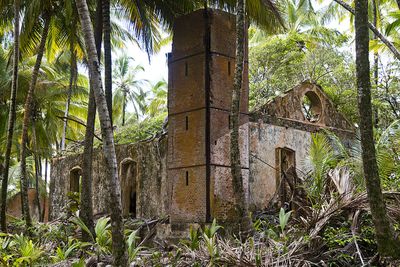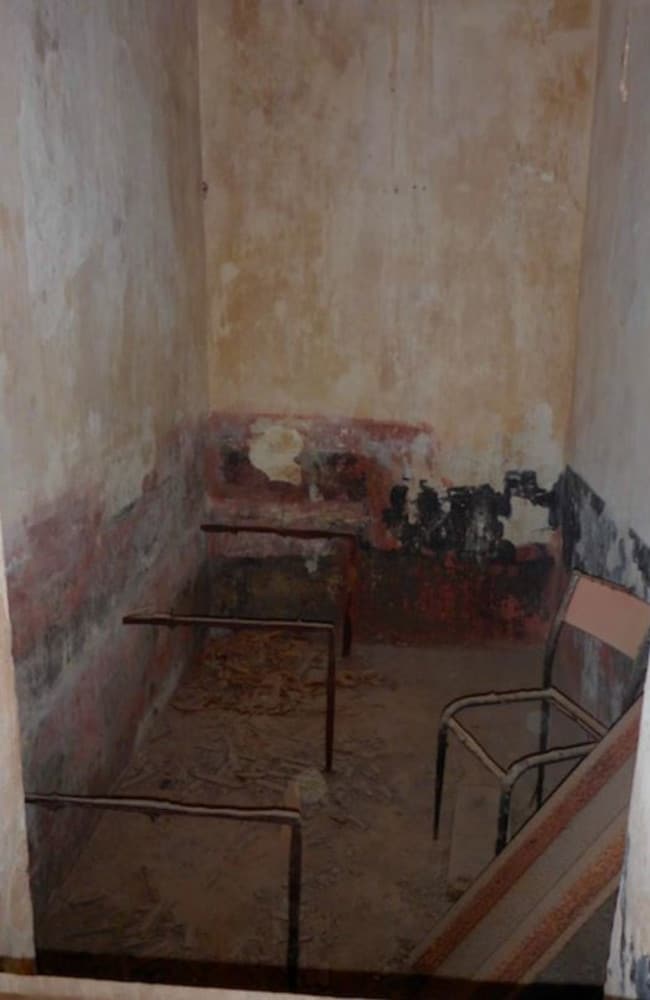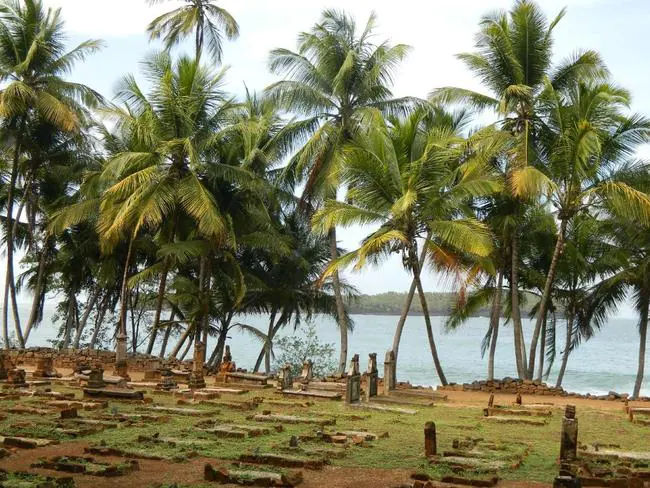Devil’s Island is the most infamous prison on earth. The mere mention strikes a chord across society, from popular culture to academia in France and abroad. Its history has been well documented. Yet, its legacy lives on in our imaginations long after all of those who experienced it have passed away. Even today, nearly 75 years after its closure, it is the subject of countless works of art and literature. So what is it about this tiny dot in the Atlantic Ocean that has attracted so much attention?
How did such a harsh prison become such an essential part of France’s history? What were the conditions like? And why was it closed down? While being a place to test the exiled, it was also a place where the French could enact their own perceived punishments. So this wasn’t just rehabilitation but a place of reckoning.

A Grim History
The idea of prison on Devil’s Island was first conceived in 1852 by the French imperial government. Over thirty years since France had lost its colonies, Napoleon III wanted to show that France still reigned supreme over its former territories.
Both the British and the Dutch were maintaining their military prisons on different islands in the Caribbean. The French government and the prison reformers of its new colony Réunion (formerly known as Bourbon or Ile-de-France) thought that it would be best to have a similar institution on the neighboring Island St. Joseph. This would prove that France was still controlling this remote region and show the world that it was a modern, enlightened country.
When prison reformer Eugène-Marin Moreau de Jonnès came up with this idea, France had been making great strides in its penal code. De Jonnès’s ideas for prisons being “places of moral and physical regeneration” were taken seriously even by the most experienced prison administrators like Alexandre Régnier, director of Ile-de-France’s prisons.
But the idea of a prison in Guiana was different. Possibly more ambitious than anything that had come before it. However, only sixty kilometers away from the Island, Devil’s Island was an isolated place where France could truly test its theories on reforming a prisoner. It was to be a completely self-sustaining penal colony.
Prison Horrors
Conditions at the prison were terrible. Inmates were often stuffed into overcrowded cells. Most of these cells were the size of a small bathroom. They implored isolation, much like modern prisons do today: confinement to a dark space for months on end.

More often than not, driving the prisoner insane. Some convicts were subjected to things like being put in a hole 12 feet deep and 12 feet wide. They would be subjected to all sorts of weather and temperature fluctuations.
Men were often beaten, subjected to long periods without food, water, and solitary confinement. Many stories circulate how prisoners would be dragged out from their cells and summarily shot for minor infractions like escaping or stealing food.
Due to being shackled for long periods, many convicts fell victim to rats, ants, and other animals like vampire bats. Prisoners were also forced to endure harvesting wood from underwater to build a road named Route Zero that was never used.
The prison saw around 80,000 inmates in its existence, having many of them die under grim circumstances. Sanitary conditions were deplorable, along with heavy mosquito infestations carrying tropical diseases.
You can imagine already with everything how rough prison life was. Only a few convicts out of the nearly one hundred thousand escaped. The Island, being surrounded by water, limits the means of escape for most convicts. From there, it’s a 60-kilometer sail to the mainland. Without supplies, food, or water, any inmate wishing to survive the escape is likely to have perished in the sea.
One man, a convict by Rene Belbenot, spent roughly six years on the Island. He managed to escape by assisting a film company and hid in the boat. The man’s journey is incredible: Being dropped off on the mainland and spending months recovering with a native tribe there.
While on foot, he made his way up through South America, up through Central America, and finally into the United States. After Rene made it to America was when he published his book: Dry Guillotine. This book was so inspiring that it caused the French to look at their penal colony critically. Belbenolt is just one of the many prisoners who endured the horrors of the Devil’s Island.

What’s It Like Today?
Devil’s Island is still a mysterious place because nobody knows precisely how many people died and were buried there during its history. French records, including the archives at Cayenne, were lost in the fire of 1957, which destroyed nearly all of Guiana’s records. Although it’s hard to pinpoint an exact number, one thing is sure: the prison saw about 80,000 inmates, and nearly all of them perished in that time.
Now, the Island sits barren. The crumbling buildings still stand, and the living quarters have been turned into a museum as an interesting footnote in history. The only thing that lives there is the dense jungle vegetation.
Apart from that, Devil’s Island hasn’t undergone too much change since its prison days. The guards’ living quarters are no longer used, and their dining room has been converted into a museum. The buildings are all in a state of advanced disrepair but have been preserved as part of Guiana’s history.
Today they’re leased to the Institut Français des Inities Tropicalles [The French Institute for Tropical Studies] (IFTR), which conducts research programs and houses researchers on the Island. The institute provides guides to show visitors around. In addition, a brochure about the historical significance of Devil’s Island is available for anyone who wants to take it for an exciting read while touring the area.
However, even touring as a visitor is limited. You’re not allowed on the actual Devil’s Island and are only permitted to explore Royal Island. A few cells and administrative buildings were kept here.
Read more about Nazinsky Island, the Russian gulag where prisoners had to resort to cannibalism.
- Tulip Mania – The Story of One of History’s Worst Financial Bubbles - May 15, 2022
- The True Story of Rapunzel - February 22, 2022
- The Blue Fugates: A Kentucky Family Born with Blue Skin - August 17, 2021